29 June
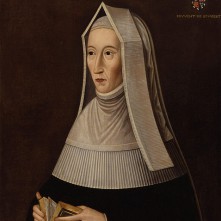
Lady Margaret Beaufort
1536 – Thomas Boleyn, Earl of Wiltshire, was stripped of his office of Lord Privy Seal. Cromwell succeeded him and was formally appointed 2nd July 1536. Wiltshire had held the office since January 1530.
1537 – Death of Henry Algernon Percy, 6th Earl of Northumberland. He was buried at Hackney parish church, and his will appointed the King as Supervisor and Edward Fox, Bishop of Hereford, and Thomas Cromwell as executors.
Percy is known for his romance with Anne Boleyn when he was part of Cardinal Wolsey's household and she was serving Catherine of Aragon. The romance was broken up by Wolsey and Percy's father, and he was forced to marry Mary Talbot. Percy served Henry VIII as warden of the east and middle marches, and was one of the peers appointed to judge George and Anne Boleyn in May 1536. He collapsed after Anne's death sentence was pronounced, and his illness prevented him from taking an active role on the Pilgrimage of Grace, which may have been fortunate, since his brothers, Thomas and Ingram, were arrested for their involvement, and Thomas was executed.
1537 – Execution of John Hussey, Baron Hussey and Chief Butler of England, by beheading at Lincoln after he was accused of conspiring with Lord Darcy during the Pilgrimage of Grace.
1540 – Bill of attainder passed against Thomas Cromwell for the crimes of corruption, heresy and treason, stripping him of his honours and condemning him to death.
1541 – Hanging of Thomas Fiennes, 9th Baron Dacre, at Tyburn. He was hanged after he and his companions murdered a servant of Nicholas Pelham while poaching on Pelham's estate in April 1541. He was buried in the church of St Selpulchre.
1552 – Birth of Elizabeth Carew (née Spencer), Lady Hunsdon, literary patron, at Althorp, Northamptonshire. Elizabeth was the sixth child of Sir John Spencer of Wormleighton and Althorp, and his wife, Katherine. Elizabeth was married first to Sir George Carey, 2nd Baron Hunsdon and grandson of Mary Boleyn, and then, after his death, to Ralph Eure, 3rd Baron Eure. Edmund Spenser's “The Faerie Queene” was addressed to “the most vertuous, and beautifull Lady, the Lady Carew” and men such as Thomas Churchyard, Thomas Nashe, Abraham Fleming, Thomas Playfere, Henry Lok and John Dowland also dedicated works to her.
1613 – The Globe Theatre burned to the ground after catching fire during a performance of Shakespeare's “Henry VIII”. Sparks from a cannon fired during the play ignited the thatched roof.
30 June
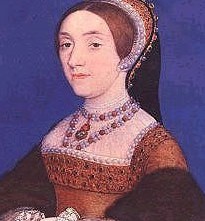
Catherine Howard
1541 - Henry VIII and his fifth wife, Catherine Howard, set off on their royal progress to the North, the aim being to meet Henry’s nephew, King James V of Scotland, at York in September and also “to emphasise the extent of his defeat of the Pilgrims [from the Pilgrimage of Grace] and the Percy interest, and to humiliate utterly all but the most clearly loyal elements”. Click here to read more about the progress.
1559 - Henry II of France suffered a mortal head wound while jousting at the Place Royale at the Hôtel des Tournelles against Gabriel Montgomery, Captain of the King's Scottish Guard. The joust was held to celebrate the Peace of Cateau-Cambrésis. The King died 10th July and was succeeded by Francis II.
1567 – Death of Thomas Becon, clergyman, reformer and theologian. Becon acted as chaplain to Edward Seymour, Lord Protector, and Archbishop Thomas Cranmer, and was appointed by Cranmer as one of the six preachers at Canterbury. Becon was imprisoned in the Tower of London from August 1553 to March 1554, during Mary I's reign, due to his religious beliefs, and on release went into exile in Strasbourg, Frankfurt and Marburg. He returned to England on Elizabeth I's accession. Becon wrote many theological works, which, in time, changed from Lutheran to Zwinglian in their theology. It is thought that he was buried somewhere in Canterbury.
1590 – Death of Sir Roger Townshend, member of Parliament and courtier in Elizabeth I's reign, at Stoke Newington in Middlesex. He was buried at St Giles Cripplegate. Townshend began his career serving the Howard family and was knighted by Charles Howard, Baron Howard of Effingham and the Lord Admiral, at sea for his part in defeating the Spanish Armada in 1588.
1 July
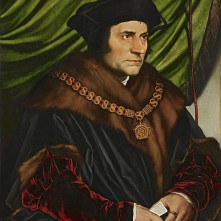
Thomas More
1535 – The trial of Sir Thomas More began. He was tried by a special commission of oyer and terminer, and found guilty under the 1534 Treason Act for “traitorously attempting to deprive the King of his title of Supreme Head of the Church”. He was condemned to death, to be executed at Tyburn, though his sentence was commuted to beheading. More was beheaded on 6th July 1535, on Tower Hill.
1536 – Parliament declared that Henry VIII’s two daughters, Mary and Elizabeth, were illegitimate. This meant that the King had no legitimate children, just three bastards, so the pressure was now on the King’s new wife, his third wife Jane Seymour, to provide a legitimate heir, and preferably a male one.
1543 - The Treaties of Greenwich were signed. In these treaties between England and Scotland, it was agreed that Prince Edward, the future Edward VI, would marry Mary, Queen of Scots.
1555 – Execution of John Bradford, evangelical preacher and martyr, at Smithfield. Bradford was burned at the stake after being condemned as a heretic. He was influenced by his friend, Martin Bucer.
1572 – Death of John Clement, physician, in exile in Louvain. He was buried near the high altar of the cathedral church of St Rumbold. Clement started his career as tutor to Thomas More's children before moving into the service of Cardinal Wolsey, who sent him to be educated at Corpus Christi College, Oxford. He also studied medicine at Louvain and in Italy. On his return to England, he joined More's household and married More's adopted daughter, Margaret Giggs, before becoming a Court Physician. Clement was imprisoned in the Tower of London in 1535, along with More, for refusing to take the “Oath of Supremacy”. He was eventually released, and in 1544 became President of the College of Physicians. Clement was forced into exile in the reign of the Protestant Edward VI and Elizabeth I.
1582 – Death of John Harington, courtier, scholar and poet, at Stepney, London. He was buried beside his second wife, Isabell, in the church of St Gregory by Paul, London. Some of his poems can be found in the 1557 “Tottel's Songes and Sonettes”. Harington served Henry VIII and Sir Thomas Seymour, and was close enough to Elizabeth I for her to stand as godmother to his son, John, in 1560.
1591 – Execution of Catholic priest and martyr George Beesley in Fleet Street London. He was hanged, drawn and quartered with Montford Scott, another Catholic priest. He was condemned to death by the statute which made being a Catholic missionary priest treason in the reign of Elizabeth I. While he was imprisoned in the Martin Tower at the Tower of London, Beesley carved his name on the wall of his cell, an inscription which can still be seen today.
1614 – Death of Isaac Casaubon, classical scholar and ecclesiastical historian, in Drury Lane, London. He was buried in Westminster Abbey. His first major work was a commentary on the work of Strabo, the Greek geographer.
1622 – Death of William Parker, 13th Baron Morley and the man who discovered the Gunpowder Plot. He died in his Essex home at Great Hallingbury.
2 July
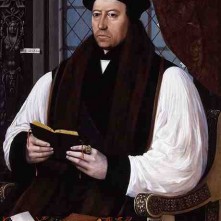
Thomas Cranmer
1497 – Death of Sir William Haute, composer and cousin of Elizabeth Woodville. Haute was Sheriff of Kent at various times, as well as a Justice of the Peace and Commissioner. According to his biographer, Peter Fleming, he was also a patron of musicians, and a composer, composing carols and “polyphonic settings of the Benedicamus domino”.
1536 – Thomas Cromwell formally appointed Lord Privy Seal in Thomas Boleyn's place.
1540 – Henry Fitzalan, the future 12th Earl of Arundel, appointed Deputy of Calais, replacing Arthur Plantagenet, Viscount Lisle.
1557 – Baptism of Philip Howard, 13th Earl of Arundel, son of Thomas Howard, 4th Duke of Norfolk, and his wife Mary (née Fitzalan). He was baptised in the Chapel Royal at Whitehall Palace with Philip of Spain and Nicholas Heath, Archbishop of York, standing as godfathers and Elizabeth Howard, dowager Duchess of Norfolk, standing as godmother.
1594 – Burial of Robert Scarlett (Old Scarlett), sexton at Peterborough Cathedral. A verse accompanying his portrait in the cathedral states that he buried Catherine of Aragon and Mary, Queen of Scots at the cathedral, but it is not known whether this is true.
1610 – Burial of Richard Knolles, historian and translator, at St Mary's Church, Sandwich. His works include “The Generall Historie of the Turkes” (1603), The “Six Bookes of a Commonweale” (1606), which was a translation of Jean Bodin's “La république”, and a translation of Camden's “Britannia”, which was not published.
3 July
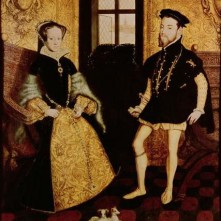
Mary I and Philip of Spain
1533 - William Blount, 4th Baron Mountjoy, Catherine of Aragon's Chamberlain, was ordered to inform Catherine again that she must recognise her new title of 'Princess Dowager' and not use the title of 'Queen'. Catherine refused, and whenever she saw her new title written in letters, she crossed it out with a pen.
1541 – Death of Girolamo Ghinucci, Italian papal administrator, Bishop of Worcester, papal nuncio and ambassador. He died in Rome and was buried in the church of San Clemente.
1557 – Mary I bid farewell to her husband, Philip of Spain, at Dover as he set off for war with France.
1579 – Death of Sir Edward Fitton, administrator and Vice-Treasurer for Elizabeth I in Ireland. His death was recorded as being ‘from the disease of the country’, which he had apparently caught on an expedition to Longford. He was buried in St Patrick's Cathedral, Dublin, beside his wife, Anne.
1594 (3rd or 4th July) – Executions of Catholic priest John Cornelius, Thomas Bosgrave (a relation of Sir John Arundell) and two servants of the Arundell family at Dorchester. They had been arrested when Cornelius was found hiding in a priest hole at Chideock Castle on 14th April 1594.
4 July
1533 – Burning of John Frith, reformer, theologian and martyr, at Smithfield for heresy. Frith was charged with heresy because of his religious views, which included his belief that Christ's words about the sacrament, “This is my body”, were not to be taken literally. Frith was given the chance to recant, but he refused.
1550 – Appointment of Dr Robert Huick (Hewicke) as Physician Extraordinary to Edward VI by letters patent. His annual stipend was £50. Huick had served Edward's father, Henry VIII, during his final illness, and he also went on to serve Elizabeth I.
1597 – Executions of Catholic priest and martyr William Anlaby with Thomas Warcop, who had been charged with harbouring him, and layman Edward Fulthrop. They were executed at Knavesmire, York. Anlaby was beatified in 1929 by Pope Pius XI.
1623 – Death of William Byrd, the famous Elizabethan English composer. He was buried next to his wife in the parish of Stondon Massey in Essex. His biographer, Craig Monson, writes that “Byrd was the first Englishman to master fully the quintessential feature of continental Renaissance music, systematic but flexible imitative textures” and he started his career as a pupil of Thomas Tallis. Byrd's works include “Cantiones sacrae” (1575), “Psalmes, Sonets, & Songs of Sadness and Pietie” (1588), “Songs of Sundrie Natures” (1589) and “Gradualia” (1605-1607).
5 July
1535 - Sir Thomas More, who was imprisoned in the Tower of London and awaiting execution, wrote his final letter. It was to his beloved daughter, Margaret Roper, and it was written in coal. More was executed the following day.
1583 – Execution of John Copping, shoemaker and religious radical, for 'dispersing' books by Robert Browne and Richard Harrison, which were viewed as “sundry seditious, schismatical and erroneous printed books”. Copping had been arrested with his friend Elias Thacker, a tailor, and Thacker was executed the day before. Books were burned at each of their executions.
1589 – Executions of Catholic priests and martyrs George Nichols and Richard Yaxley, along with Catholics Thomas Belson and Humphrey Prichard. Nichols and Yaxley were hanged, drawn and quartered, and Belson and Prichard were hanged.
1589 – Hanging of Joan Cunny (Cony), one of the 'Essex Witches', at Chelmsford. Cunny had been accused of killing her neighbours and causing a great storm. Cunny had told of how she knelt in a circle and prayed to Satan to conjure her familiar and spirits. The pre-trial examinations of Cunny, Joan Prentice and Joan Upney were published in 1589 as “The Apprehension and Confession of Three Notorious Witches”. Joan Prentice, who had a ferret-shaped familiar named Satan who had killed a child, was also hanged on 5th July.
1591 – Burial of Humfrey (Humfray) Cole, goldsmith, engraver, mathematical instrument maker and die sinker, at St Gregory by St Paul's, London. Cole was a die sinker at the Tower of London mint. His mathematical instruments included an armillary sphere, astrolabe and instruments needed for Martin Frobisher's 1576 voyage. Twenty-six of his instruments still survive today.
1600 – Execution of Jean Livingston (Lady Warriston) at the Girth Cross in Edinburgh. She was beheaded by the 'Maiden', a type of guillotine, for murder. Livingston was unhappily married to John Kincaid of Warriston when her nurse, Janet Murdo, came up with the idea of murdering him to release Livingston from her torment. Livingston asked a servant, Robert Weir, to do the deed, which he did on the night of 1st July 1600. Murdo was burned at the stake on Castle Hill and Weir, who had fled after the murder, was arrested in 1604 and 'broken on the wheel' at Edinburgh.

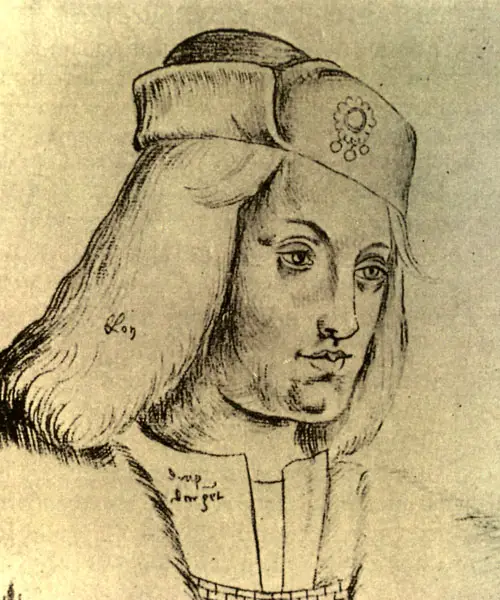
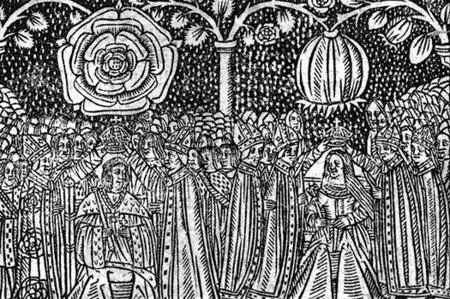
Leave a Reply